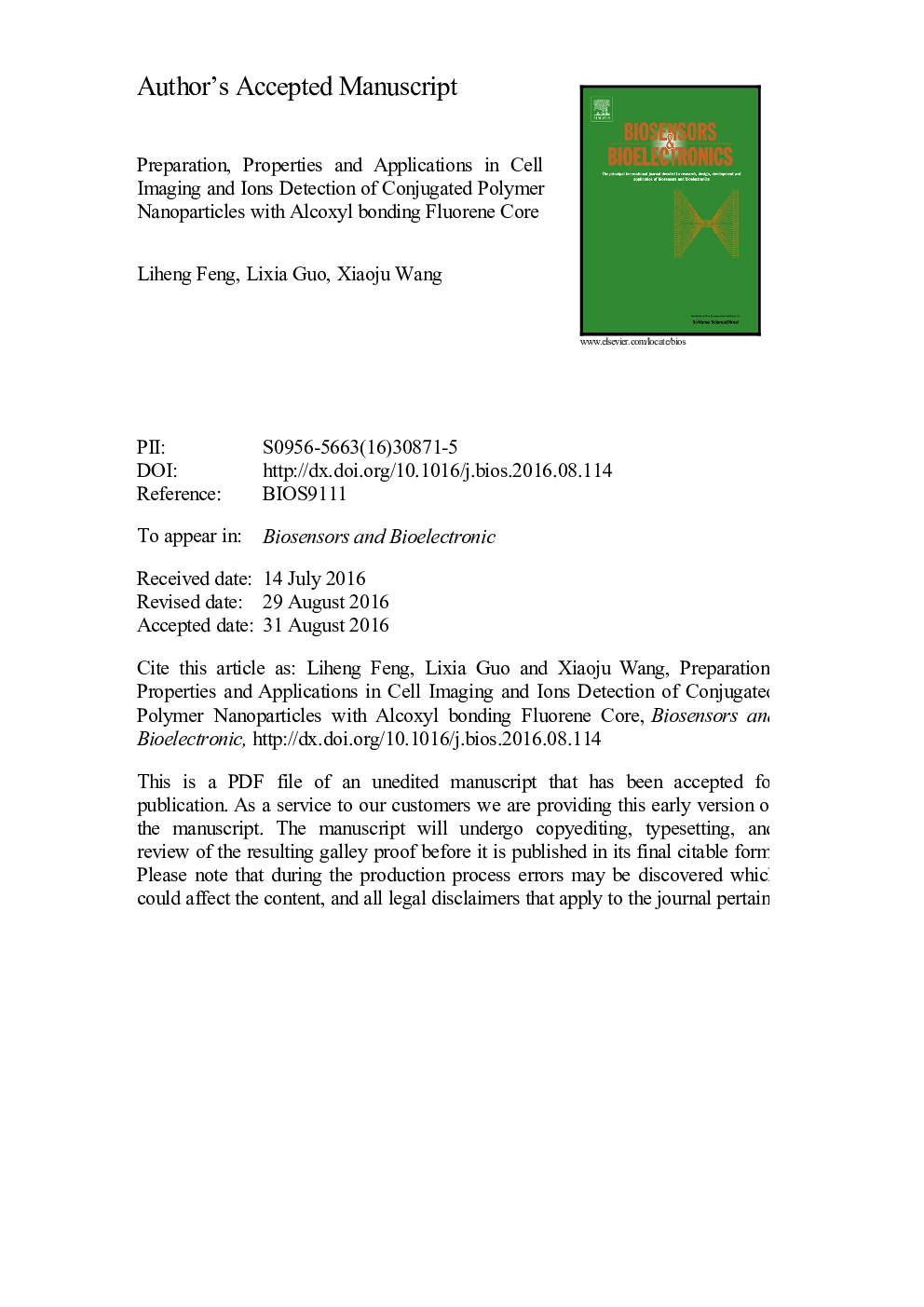| Article ID | Journal | Published Year | Pages | File Type |
|---|---|---|---|---|
| 7230215 | Biosensors and Bioelectronics | 2017 | 26 Pages |
Abstract
A novel conjugated polymer (PFP) comprised of fluorene, benzene and alcoxyl units was synthesized by a Suzuki coupling reaction between fluorene borate and dibromobenzene derivant. Due to its longer alcoxyl groups in the side chain, PFP polymer possesses good solubility in common organic solvents. Accordingly, conjugated polymer nanoparticles (CPNs) from PFP polymer were easily prepared by a re-precipitation method. A spherical structure of the CPNs with an average diameter of ~75Â nm was verified by dynamic light scattering (DLS) and scanning electron microscopy (SEM). The CPNs exhibit high photostability, good biocompatibility and low cytotoxicity. Based on these excellent properties, the CPNs as staining and labeling regents were used to cell imaging and located in the cytoplasm. Interestingly, the fluorescent probe based on CPNs displays high selectivity and sensitivity for Fe(III) in water because of the aggregation-induced fluorescence quenching action between CPNs and Fe(III). The contribution of the report lies in providing a new strategy for designing and developing CPNs-based probes, and applying in the interdisciplinary fields of chemistry, biology and material sciences.
Related Topics
Physical Sciences and Engineering
Chemistry
Analytical Chemistry
Authors
Liheng Feng, Lixia Guo, Xiaoju Wang,
